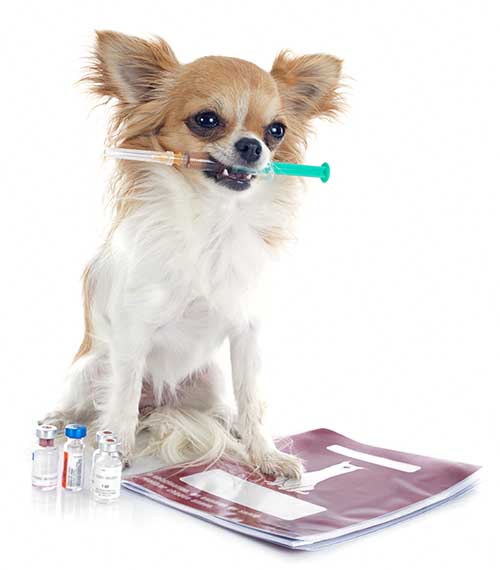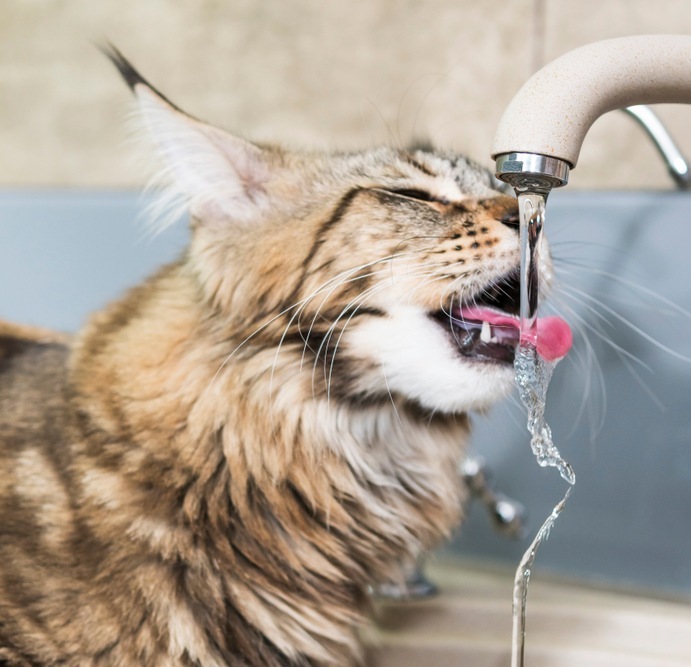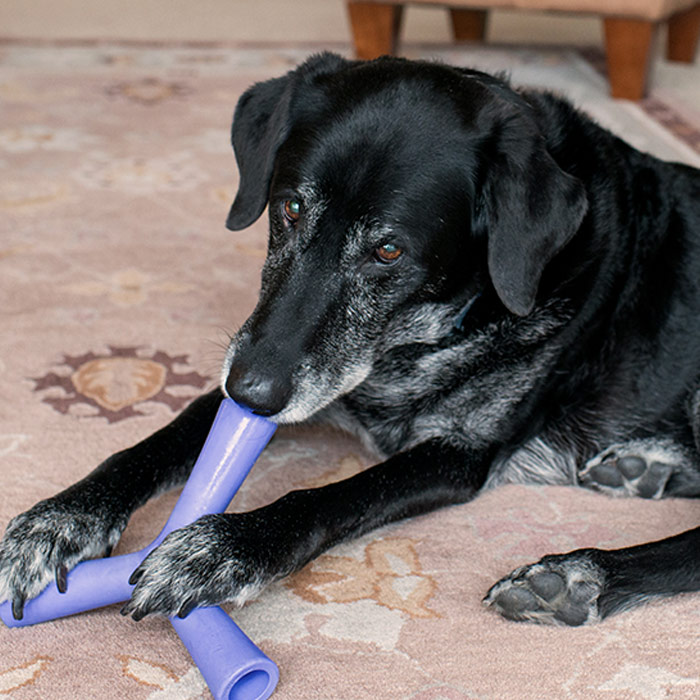Leptospirosis in dogs
What is leptospirosis in dogs?
 Leptospirosis is a potentially very serious infection that is caused by Leptospira bacteria. There are many strains of Leptospira bacteria that can cause disease in animals. Leptospirosis in dogs can be a life-threatening illness in some dogs, while others have a mild and transient illness and recover spontaneously.
Leptospirosis is a potentially very serious infection that is caused by Leptospira bacteria. There are many strains of Leptospira bacteria that can cause disease in animals. Leptospirosis in dogs can be a life-threatening illness in some dogs, while others have a mild and transient illness and recover spontaneously.
How are dogs infected with leptospirosis?
Dogs may be infected by direct contact with the urine of an infected animal, which in Australia is most commonly a rodent or small marsupial. Dogs may also be infected indirectly by contact with water or soil that is contaminated with infected urine.
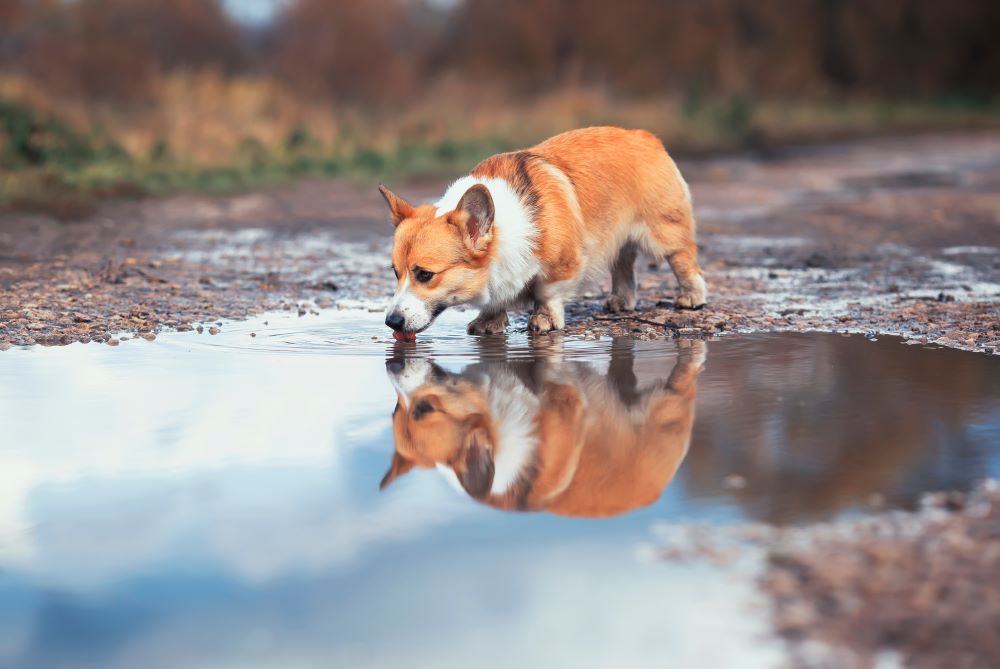
Because Leptospirosis bacteria can survive for extended periods in surface waters such as puddles, swamps, streams and rivers, dogs can get leptospirosis from walking in or drinking from contaminated puddles or bodies of water that contain urine from infected animals.
Leptospirosis can also be contracted through a bite from an infected animal, by eating infected tissues or carcasses and, though rarely, through the placenta from the mother dog to the puppies.
How common is leptospirosis in dogs in Australia?
The Australian Veterinary Association (AVA) has warned pet owners to be aware of an increase in dogs suffering from Leptospirosis. While the disease is still relatively uncommon in Australia, it has been around for decades, historically being more common in areas with warm climates and high annual rainfall such as north-eastern NSW and Queensland, but it can occur anywhere, including metropolitan areas.
Leptospira bacteria can survive for several months in stagnant water or damp soil, and more commonly becomes a problem after periods of rain or flooding. With the combination of an increase in rodent numbers due to the recent mouse plague and more water being around due to heavy rains in many parts of the country, dogs may be at greater risk of coming into contact with leptospirosis bacteria either through direct contact with rodents or indirectly through contaminated water.
According to a report in the Australian Veterinary Journal, between 2017 and 2020, leptospirosis was confirmed in 17 dogs in Sydney, sadly with an unusually high fatality rate of 88%.
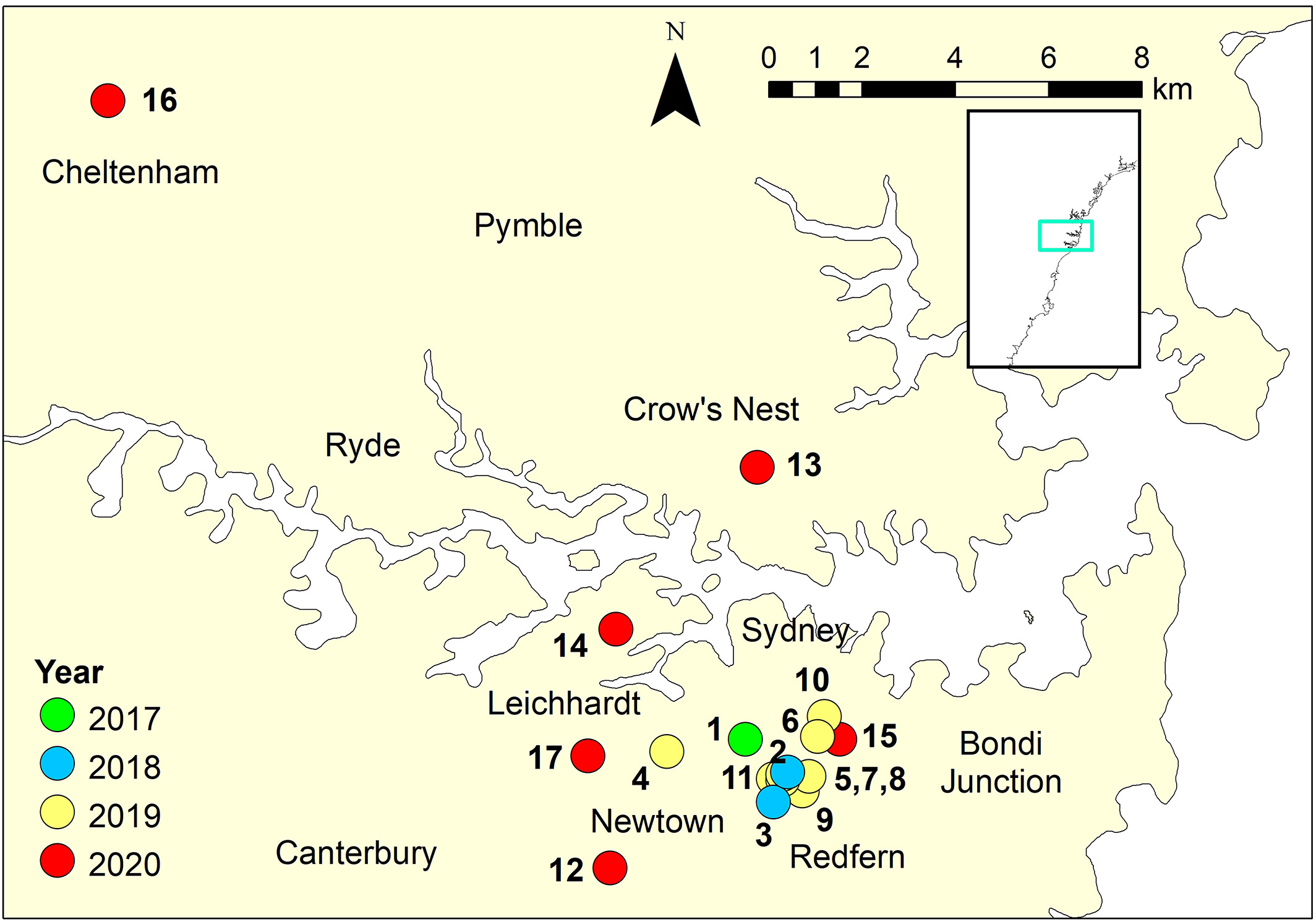
Source: https://onlinelibrary.wiley.com/doi/10.1111/avj.13148
Since 2020, Leptospirosis has increasingly been detected in suburbs in and around Sydney, the NSW Central Coast, the NSW South Coast and the ACT. Many of the affected dogs have had to be euthanised because of kidney failure.
The AVA has issued disease alerts for the areas in NSW and ACT where the disease has more recently been detected. Bear in mind that as some dogs only present with very mild symptoms, cases of Leptospirosis may go undiagnosed.
Can I get Leptospirosis from my dog?
Leptospirosis is a zoonotic disease, which means it can be spread from animals to people. Children are most at risk of acquiring the disease from an infected pet.
Owners and veterinary staff need to be especially cautious when handling a dog with leptospirosis. Protective measures such as face masks, gloves, and regular handwashing are recommended to avoid getting infected urine in the eyes, nose, or mouth or on broken skin and all body fluids should be treated as a biologically hazardous material. Any person feeling unwell after exposure to an infected dog should seek medical attention.
What happens once a dog is infected by leptospirosis?
The bacteria enter the dog’s body via a wound or abrasion in the skin or through the membranes of its mouth, nose or eyes. Once in the body, they spread rapidly via the lymph system to the bloodstream and then via the bloodstream to the organs and tissues of the body, including the liver, kidneys, central nervous system, eyes and reproductive system.
The extent to which the infection will affect these organs depends on the dog’s immune system and its ability to fight the infection. If it mounts a strong immune response and survives, the bacteria will be cleared from most organs and the bloodstream. However, the infection can persist and reproduce in sites hidden from the immune system, most often in the kidneys and reproductive tract. This can result in the animal producing infected urine and genital secretions for months or even years.
Infection of the liver or kidneys can cause serious damage to these organs that can ultimately be fatal. In fact, canine fatality rates globally have been reported to be approximately 50% of hospitalised cases. Younger animals with less developed immune systems are at the highest risk for severe complications.
Symptoms of leptospirosis in dogs
The symptoms of leptospirosis in dogs can vary greatly. Some infected dogs do not show any signs of illness, while in others early symptoms may include:
- Fever
- Lethargy
- Dehydration
- Loss of appetite
- Joint or muscle pain
- Eye and nasal discharge
- Changes in frequency &/or amount of urination
- Depression

The disease may progress within a few days to affect the kidneys – in fact, acute kidney injury has been the most common presentation for canine leptospirosis in recent years. Symptoms at this stage may include:
- Vomiting
- Dehydration
- Back pain from kidney inflammation
- Yellow gums and mucus membranes
- Kidney failure
Other symptoms can include:
- Stiffness
- Weakness
- Reluctance to move
- Jaundice
- Eye inflammation
- Breathing difficulties
- Bleeding disorders
- Swollen limbs
- Abdominal pain
Diagnosis of leptospirosis in dogs
Leptospirosis may be suspected based on exposure history (e.g. known contact with a rodent) and symptoms exhibited by the dog, although many of these symptoms can also be seen with other diseases.
In addition to a physical examination, your veterinarian may recommend a number of tests.
- Specialised tests are available to identify Leptospirosis bacteria in the blood, urine, or tissue.
- Blood and urine cultures can examine the prevalence of the bacteria.
- A titer test can measure the presence of antibodies in the bloodstream, which indicates the body’s immune response to infection.
- X-rays and ultrasound may also be performed to identify which organs are affected and what treatments are necessary.
Treatment of leptospirosis in dogs
Leptospirosis is generally treated with antibiotics and supportive care. Antibiotics are usually very effective in treating leptospirosis, and most dogs respond quickly once antibiotics are started. These will be prescribed by your veterinarian, with the type of antibiotic dependent on the stage of infection. There are two phases of antibiotic treatment:
- The first phase quickly clears the most serious or acute infection from the body.
- The second phase clears the low-grade lingering infection found in carrier dogs.
Dogs with acute severe disease should be hospitalised for intravenous fluid treatment and other supportive measures to maintain normal fluid, electrolyte, and acid-base balance.
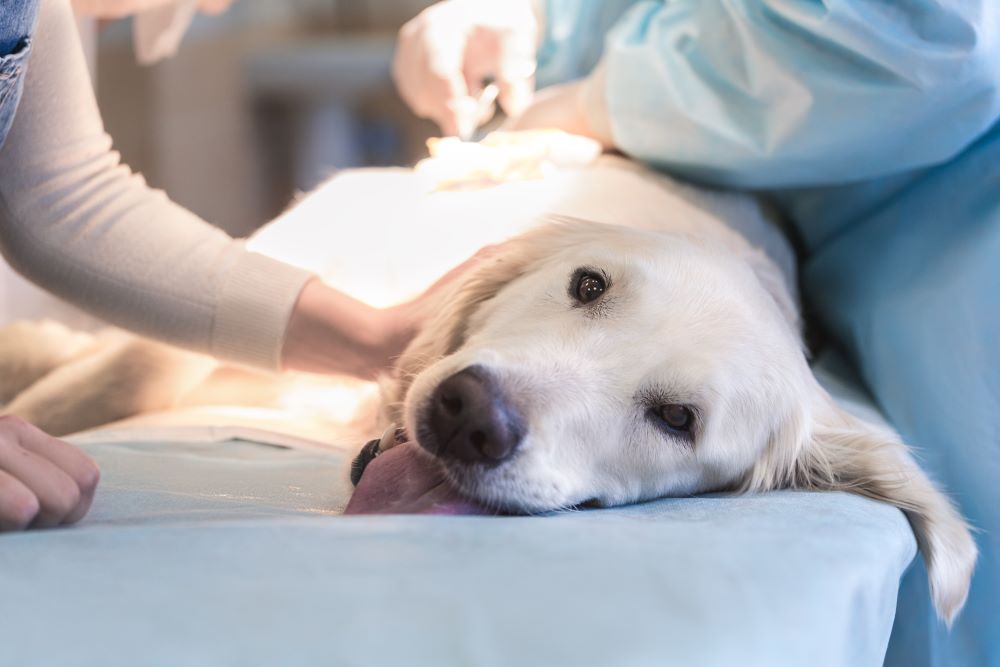
Prognosis…
When treated early and aggressively, the chances for recovery are good but there is still a risk of permanent residual kidney or liver damage.
The prognosis for severely infected dogs is guarded because overwhelming infection usually causes irreversible organ damage, resulting in rapid deterioration and death in spite of appropriate treatment.
Prevention of leptospirosis in dogs
“Vaccination, combined with preventing dogs swimming or playing in lakes, ponds or other sources of stagnant water (which could be contaminated) can help minimise the risk of Leptospirosis infection” – Dr Michael Hayward, President of the Australian Veterinary Association ACT Division
Currently available vaccines effectively prevent four of the most common subtypes of Leptospirosis for at least 12 months (vaccinated dogs may still be susceptible to infections with other subtypes). Called to Protech C2i vaccine, it consists of a course of two injections, one injection on the day with a booster injection required two weeks later. The vaccine can be given to dogs from 6 weeks of age; an annual booster is recommended for at-risk dogs.
This is an additional vaccination and is not a part of the core vaccinations administered to puppies. Non-core vaccinations may be advisable based on risk factors such as the geographic location, environment and lifestyle of the dog. If the dog is designated as low risk, the veterinarian may not recommend the vaccination. You may however still request it as a preventative measure.
Reducing your dog’s exposure to possible sources of the Leptospira bacteria can reduce its chances of infection. Where possible, prevent your dog from playing in stagnant water, drinking from puddles, urinating in or nearby to stagnant muddy water and having contact with rodents. If you have rodents around your property use pet safe rodent control methods. Inspect kennels before placing your dog in one—the kennel should be kept very clean and should be free of rodents (look for rodent droppings).
Dogs that have recently been exposed to leptospirosis may be treated with antibiotics given by mouth for 14 days to prevent infection.
Should I vaccinate my dog against Leptospirosis?
Leptospirosis in dogs in Australia is considered to be underdiagnosed, so it’s imperative to speak with your veterinarian about current recommendations regarding vaccinating dogs in your area.
Because the bacteria may be present in rodent urine, if your dog lives in or frequents areas impacted by rats or mice, then they are at risk from leptospirosis and vaccination should be seriously considered.
Consult with your veterinarian to see if the leptospirosis vaccine for dogs is appropriate for your pet.
Bow Wow Meow Pet Insurance can help protect you and your dog should an unexpected trip to the vet occur.
-
Find out more about our dog insurance options
-
Get an online pet insurance quote







